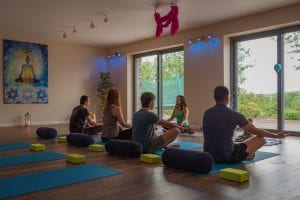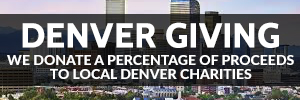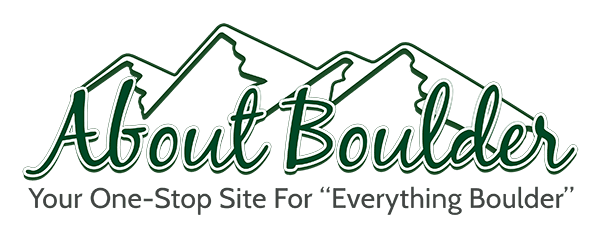Get Better Sleep With Restorative Yoga: A Simple 3-Step Routine

The weather is cooler, and the days are getting shorter which means that melatonin will kick in earlier. However, if you’re a busy, multitasking individual with an overactive mind (likely most of us), getting adequate sleep at a decent hour can seem like a difficult, near-impossible endeavor.
This is where restorative yoga comes into play.
There are many different types of yoga, and it’s about time this particular style gets its due. You don’t have to constantly be sweating in a heated room to reap the same benefits that a more static practice has to offer—calmness, reduced stress, enhanced flexibility (to name a few).
In fact, restorative yoga is the perfect precursor to restful sleep. Through the use of props and seated postures held for at least 10 minutes each (sometimes longer), it’s possible to train the mind into meditative states of relaxation. This, in turn, can make sleep easily accessible.
A good night’s rest is absolutely essential for enhanced productivity the next day (and overall wellbeing, for that matter). The earlier we rest, the earlier we rise. Studies suggest that by getting up early after an adequate amount of sleep (roughly 8 hours for adults), we have more energy and mental clarity to perform tasks in a timely, efficient manner. At the end of the day, room is left over for getting to bed at a decent hour. What better way to unwind and reset the biological clock than by a gentle yoga practice?
The great thing about restorative yoga is that it’s easily accessible, even from the comfort of your home. Don’t already have blocks or bolsters? You can instead use standard-sized pillows and rolled-up blankets to accompany your practice. If you’re looking to switch up your habits for better sleep and increased relaxation, maybe swap your late-night social media scrolling with this simple restorative routine. All levels are welcome.
(Just remember to practice. Try not to get discouraged if results don’t immediately show. The more something is repeated, the more it becomes engrained into habit–you’ll benefit in the long run. Rejuvenation is likely to follow.)

FIND A COMFORTABLE SEAT SOMEWHERE QUIET
Dim the lights, and set a timer for at least 10 minutes (the average time for inducing a state of relaxation).
Sit in a comfortable position best suited to your needs–blankets, pillows, and a facemask (or washcloth) nearby for ready use. Make sure your back has enough support so that you aren’t hunched over (this causes unnecessary pressure on your spine, and constriction in your diaphragm).
Rest your palms in your lap (or on the knees) and close your eyes. Allow your body to release tension as you ease into stillness. Notice if your mind wanders; see if you can quiet your thoughts through slow breathing. By bringing attention to the breath—lengthening it overtime—a sense of calm will begin to wash over.
TRANSITION TO CHILD’S POSE
(BALASANA)
Once 15 minutes is up, slowly bend forward from your seated position, extending your arms out in front of you, and briefly come onto all fours. Grab your bolster, or a couple of large, thick pillows (stacked; one on top of the other) and have it/them positioned directly underneath your torso, and between the legs.
Lower your body until both belly and chest are fully resting on the prop of choice. Bring your knees out to either side so that your big toes are touching, with the upper thighs resting comfortably against your heels (the bottom sides of your feet should be facing the ceiling). For those of you with sensitive knees, feel free to bring both legs off to one side of the mat (torso will still be facing forward)—just be sure to repeat the same process on the opposite side after a few minutes.
Lastly, make sure that your head is relaxed on top of your prop (it shouldn’t be hanging off). It can even be supported against folded arms. As in most yoga poses, there are many variations to this posture. Do what’s best for your body.
Hug the bolster (or pillows), and feel the support as you breathe. Allow your body to sink into the prop as if your muscles were melting; absorbing the fabric. Rest here for at least 15 minutes.
FINALIZE YOU PRACTICE WITH RECLINING BOUND ANGLE POSE
(SUPTA BADDHA KONASANA)
From Child’s Pose, slowly roll over onto your back so that your sacrum is firmly up against the end of the prop. Lower your spine on top of it. You should now be facing the ceiling, with the cushions firmly underneath your back and head. Bend your knees out to each side of your body, the bottoms of the feet pressed against one another (thighs and legs should look like opened butterfly wings).
It might be a good idea to place blocks (if you have some) or rolled-up blankets underneath each knee for additional support. Or, if you wish, completely extend the legs out in front of you. Allow your arms to drop down and out to the sides, palms facing upwards. Use your facemask or washcloth here, if you so desire. For an enhanced blissful experience, infuse your cloth with lavender essential oil ahead of time.
Inhale and exhale deeply as you lay here in this final resting posture for 20 minutes or so. Relax your limbs, and feel the expansiveness of your chest through the support of the prop.
Let this entire practice be a form of self-care and healing after a long day. Restorative yoga is about easing into sensations, and bringing out deeper mind-body awareness. Over time, you just might notice yourself drifting in and out of consciousness—
maybe even falling completely asleep by the time you are finished.

















